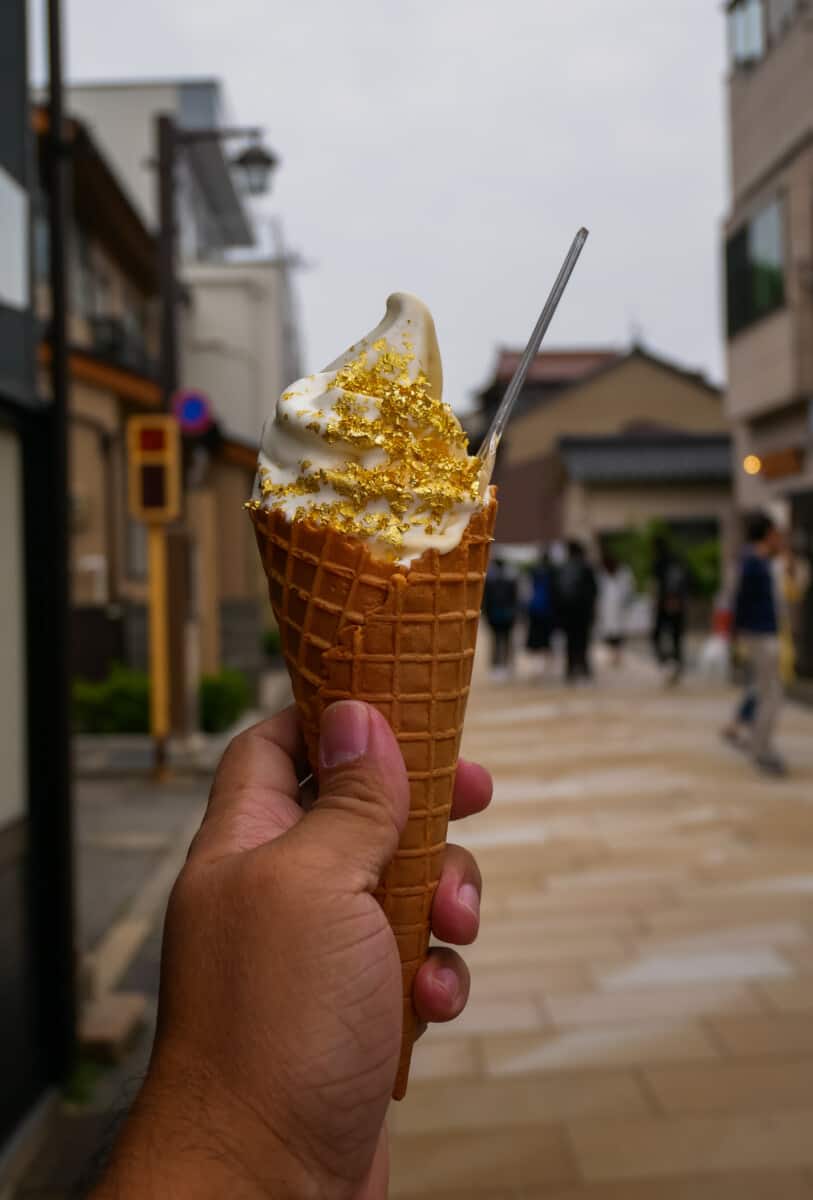Japanese cuisine is famous worldwide; however, they serve many exotic foods that you may not be aware of. From raw horse meat to fish sperm sacs; insects to garlic-flavored ice cream, dining in Japan is a unique experience guaranteed to bring a new range of flavors and textures to your palate.
Continue reading to discover ten strange foods you’re likely to encounter when dining in Japan. From the slimy textures of neba neba to the toxic poison of the pufferfish, find out how these popular dishes are prepared and served.
Natto or Neba Neba Type of Food
Neba Neba foods are unique and popular foods within Japan that may be off-putting for visitors due to their slimy or sticky texture. Often eaten over rice, grated yam, or mushrooms, neba neba foods are popular for their therapeutic properties, such as their ability to cool the body down in hot weather.
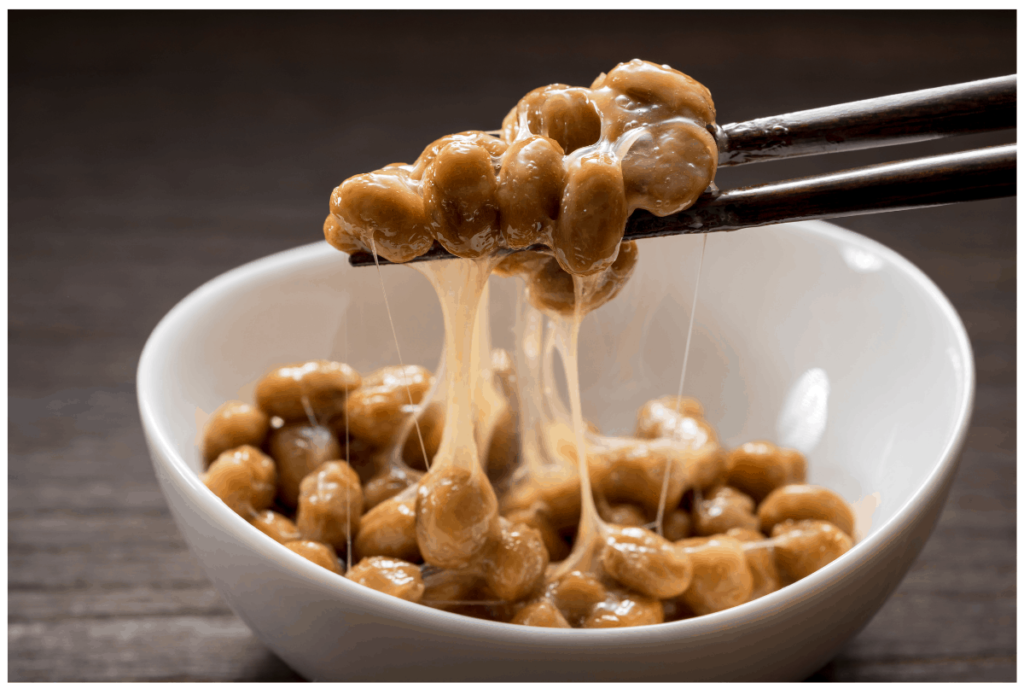
Natto is the name given to a neba neba food consisting of sticky fermented soybeans over rice. Often sold with tare sauce and mustard, the mixture becomes frothy, and some people say you should stir this dish 100 times before you eat it.
Basashi
Basashi is raw horse meat, which may be off-putting to travelers from countries such as the USA, where horse meat consumption is illegal.
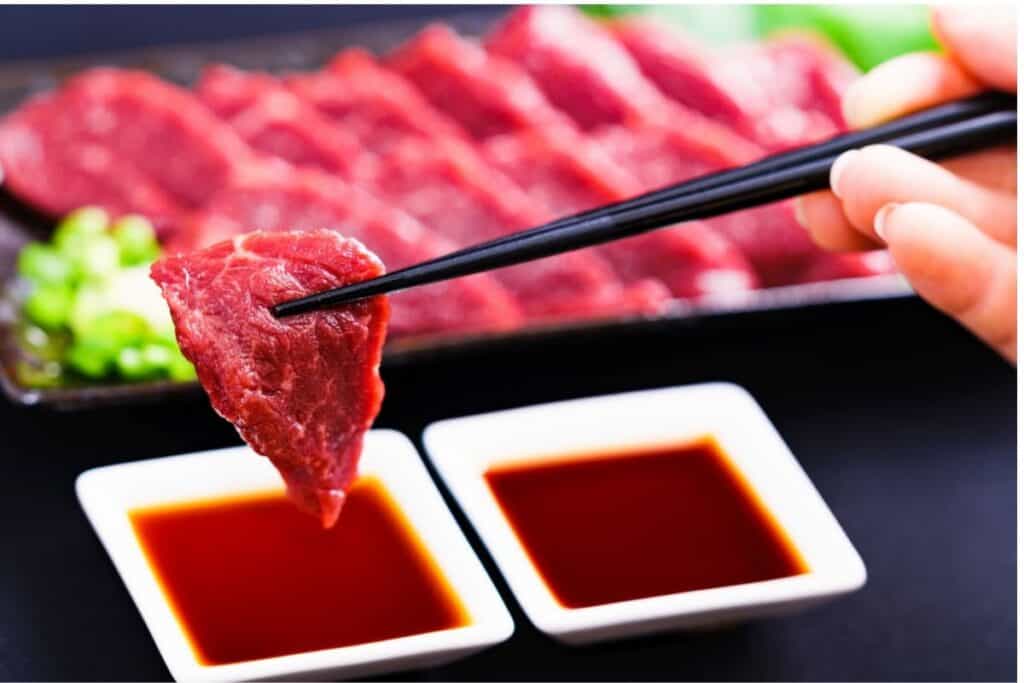
Sharing various similarities with its raw fish counterpart sashimi, basashi is available at many izakaya and yaki-niku restaurants, and serving options include soy sauce or ponzu dressing.
Offering more protein than beef, basashi is lean yet tender meat that doesn’t leave a gamey aftertaste in your mouth.
Nankotsu
If you love fried chicken, why not try the Japanese counterpart, nankotsu, or fried chicken cartilage. The texture is composed of lumps of cartilage that become hard and crunchy through the process of deep-frying.
Often served with lemon juice, this dish makes a tasty bar snack. Alternatively, you can enjoy nankotsu as part of Yakitori or skewers.
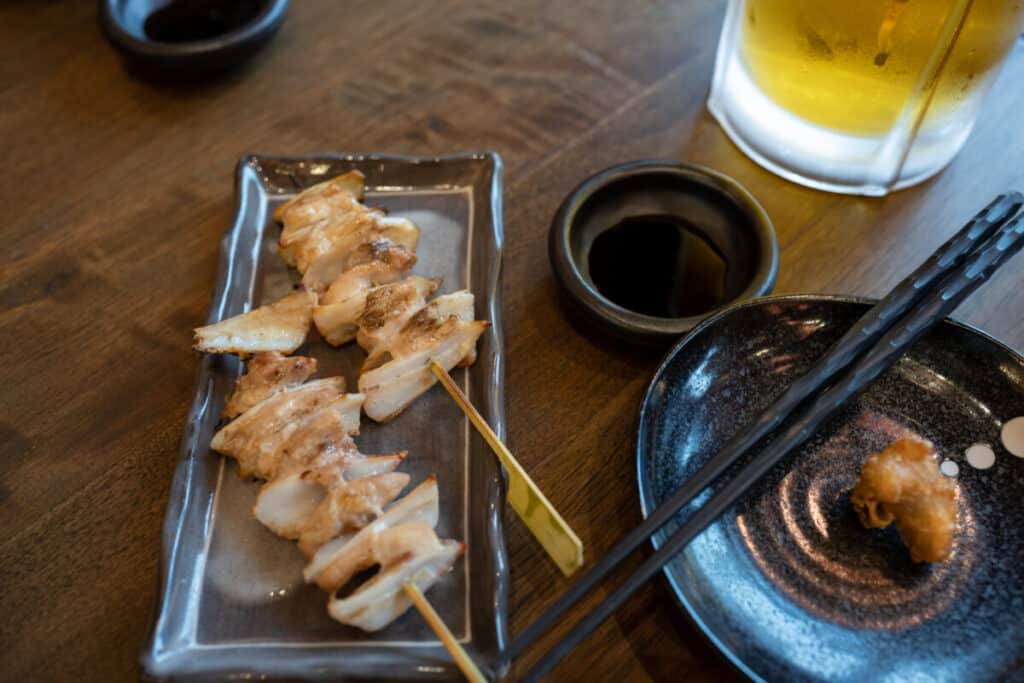
Shirako
With a name that means cod milt in English, this Japanese dish consists of sperm sacs from the male codfish, and this creamy delicacy is prevalent throughout Japan’s winter months.
The color and look of shirako change based on how full the cod’s sperm sacs are. Full sacs provide a whiter, more opaque dish. When raw, its texture is squishy, becoming creamier as heat is applied.
It’s believed that shirako holds anti-aging properties and is packed full of protein and vitamins D and B12.
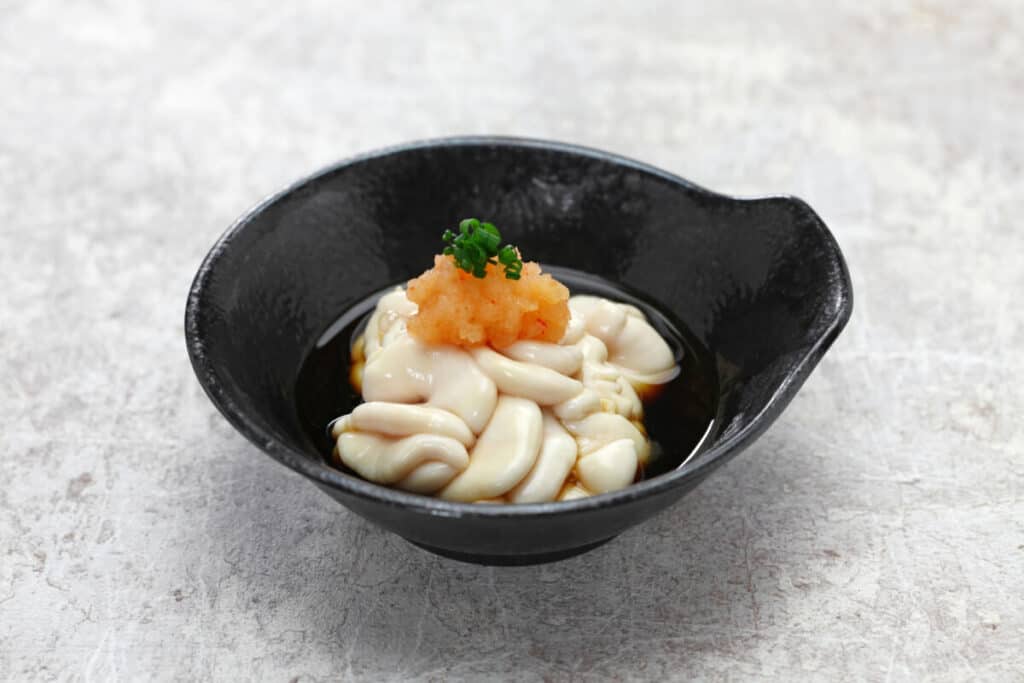
Kujira
Kujira comes with some controversy since it is whale meat. But this dish dates back to post-war life in Japan when traditional meats such as beef and pork were highly priced and hard to source.
The meat is slightly thicker than the average piece of fish, though it is often cut into thin slices, and it carries a strong flavor of salt and fish.
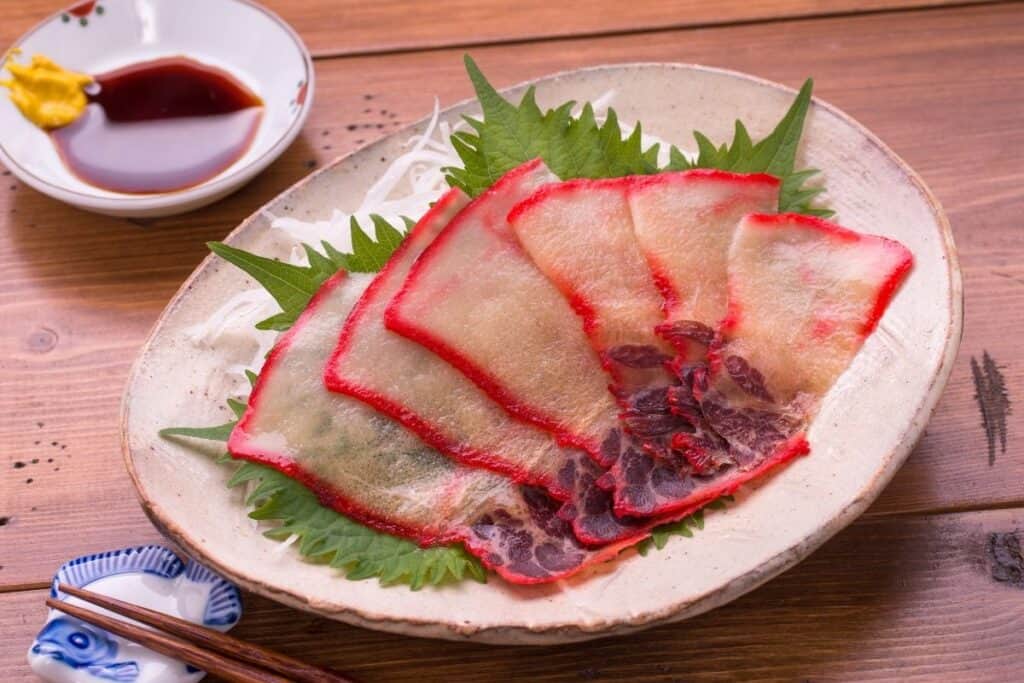
Horumon
Composed of pig and cow intestines, the dish of horumon gets its name from the Kansai dialect horu-mono, which means the things that are thrown away.
Despite its meaning, horumon is a popular food in Japan in many restaurants. Some eateries will grill and serve it among a range of meats, while others will present it in a pot dish called Motsunabe.
An inexpensive dish, motsunabe is a hot and salty boiling pot with garlic and leek, among other Japanese vegetables, complete with meat and the intestines. The meal contains an abundance of collagen, which is excellent for the skin.
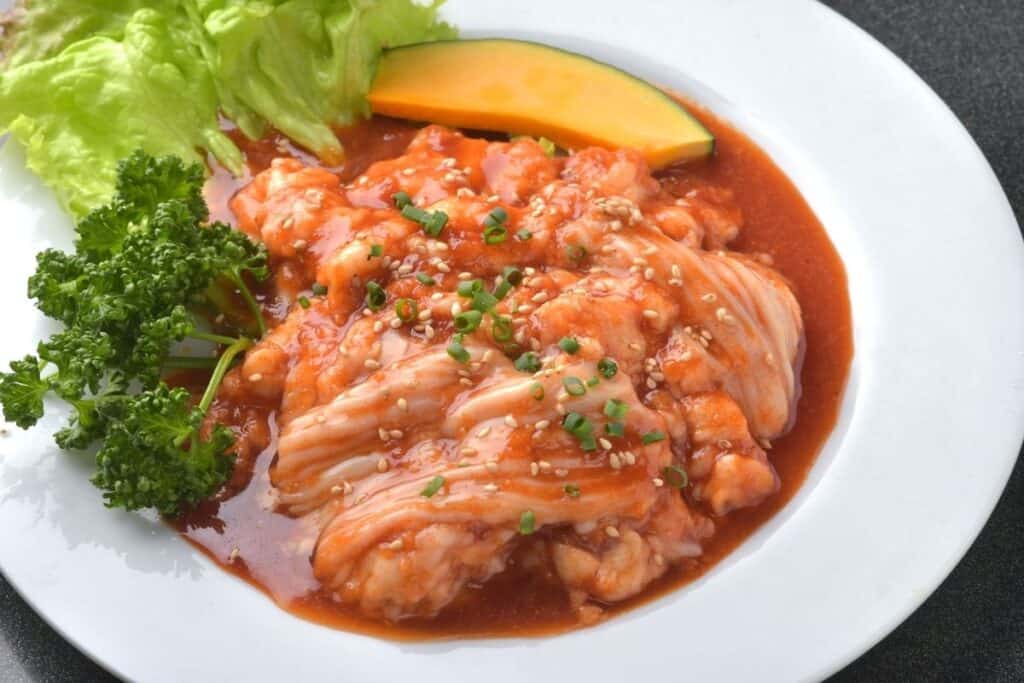
Umibudo
Umibudo, otherwise known as sea grapes, are not literal sea grapes but a type of seaweed. Their name comes from their resemblance to tiny grapes. When eaten, these little bubbles of salty flavor pop in the mouth for a taste sensation. The Japanese use the phrase Puchi Puchi to describe the noise made when you eat them.
Of all the strange foods you’ll come across in Japan, umibodu is one of the healthiest. Low in calories, it’s believed to have medicinal properties and minerals, vitamins, iron, and calcium. Additionally, this seaweed contains high levels of omega 3 fatty acids.
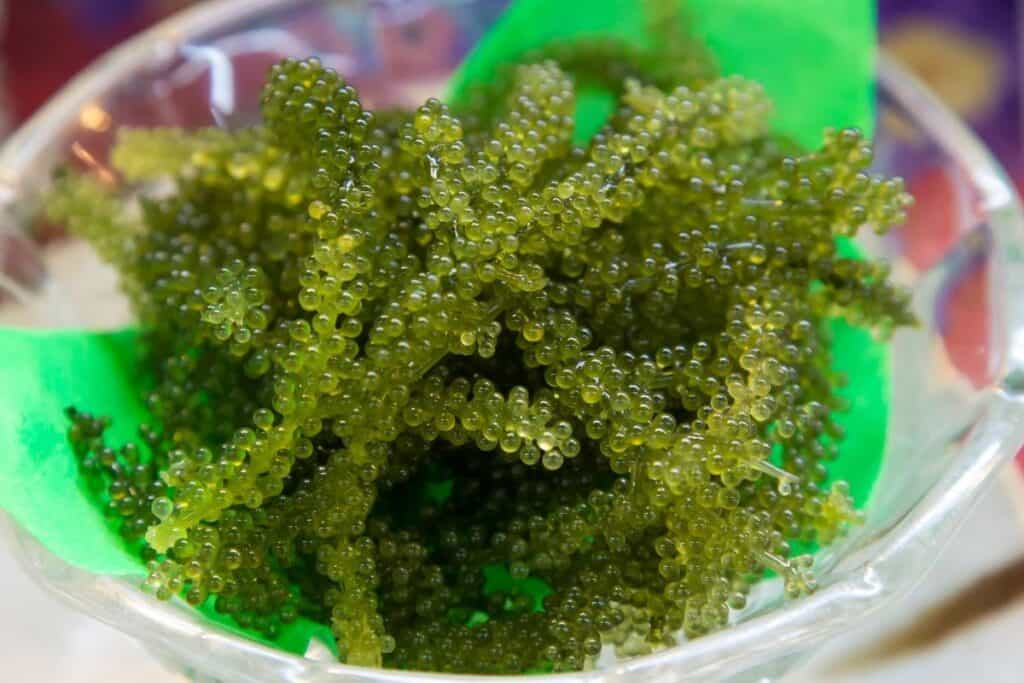
Fugu
Fugu is the Japanese name for the pufferfish. Due to its poisonous nature, Fugu carries the risk of death if not prepared correctly. Pufferfish contain a toxin even more deadly than cyanide, and Japanese chefs train for several years to learn how to remove toxic organs without contaminating the rest of the meat.
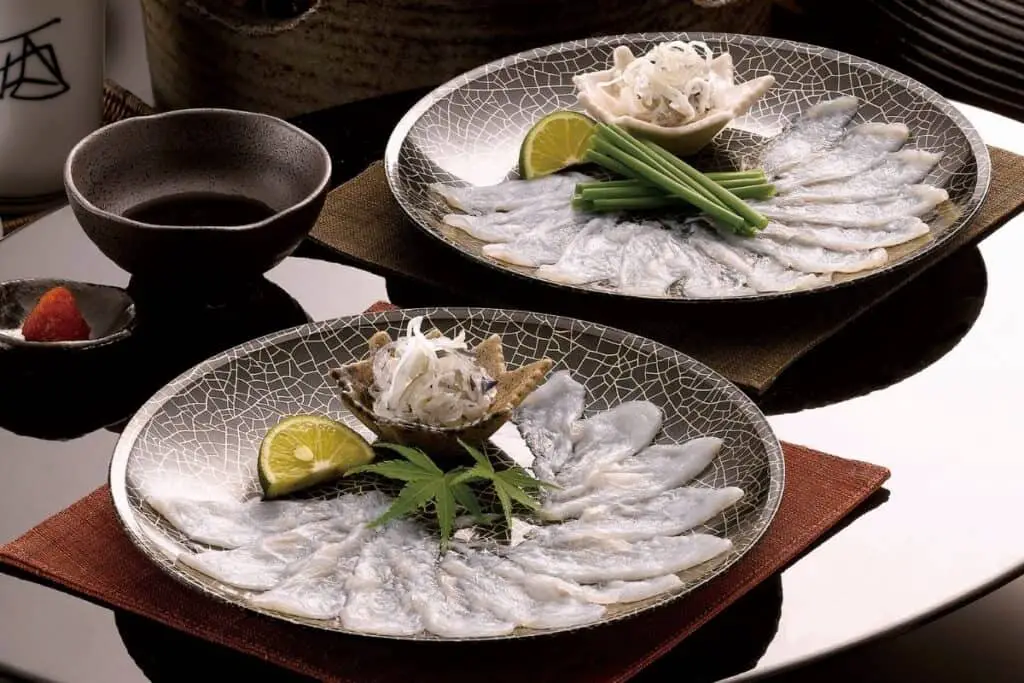
The most popular fugu dish is served raw “sashimi”. Knives with exceptionally thin blades cut translucent slices from the fish in a process called usuzukuri. Fugu roe, also called milt, is a prized food in Japan found in stores across the country, often grilled and salted.
A blowfish fin can be smoked and served with sake for fugu-fin sake. The skin is also edible; after removing the spikes, it can be added to a salad called yubiki.
Inago
In the past, people would catch grasshoppers to prevent them from damaging rice crops, which led to a dish that is still eaten although more rarely around Japan today.
Typically cooked in soy sauce and mirin until the insects become crisp, this delicacy provides an excellent source of protein and significantly reduces the environment’s impact compared to meat consumption.
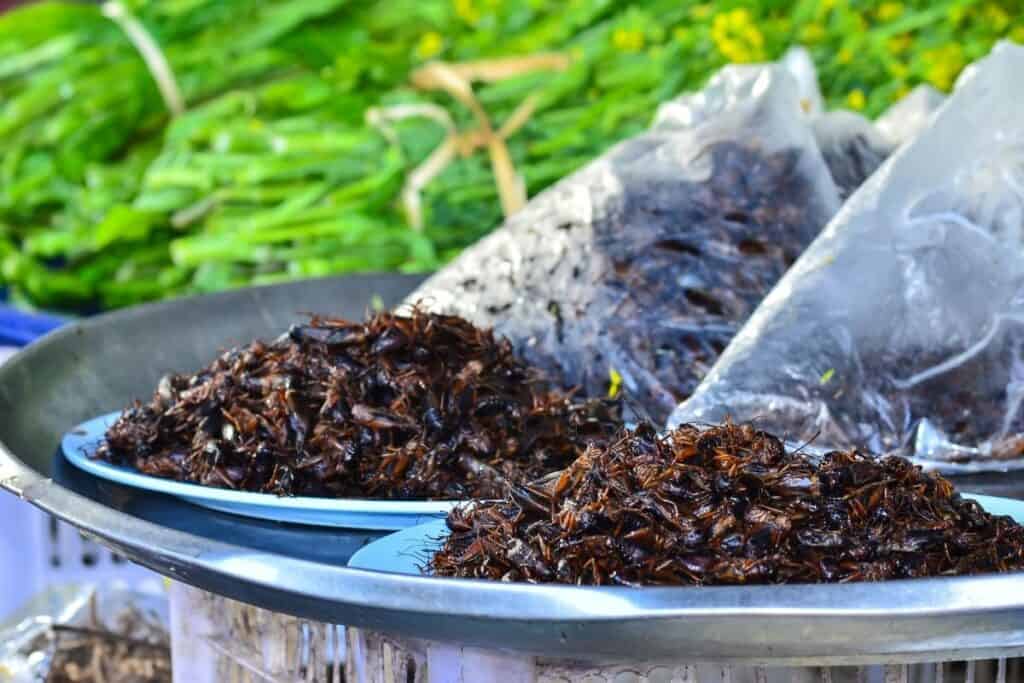
Unique flavors of Ice Cream
Ice cream is a hugely popular dessert food in Japan, especially soft serve. And while many of us are partial to a tub of ice cream in front of the TV, the flavors available in Japan provide a unique tasting experience.
The most popular flavor in the prefecture of Kanazawa is golden ice cream, which locals call kinpaku. Kinpaku means golden leaf, a symbol that has represented this city’s heritage since 1583.
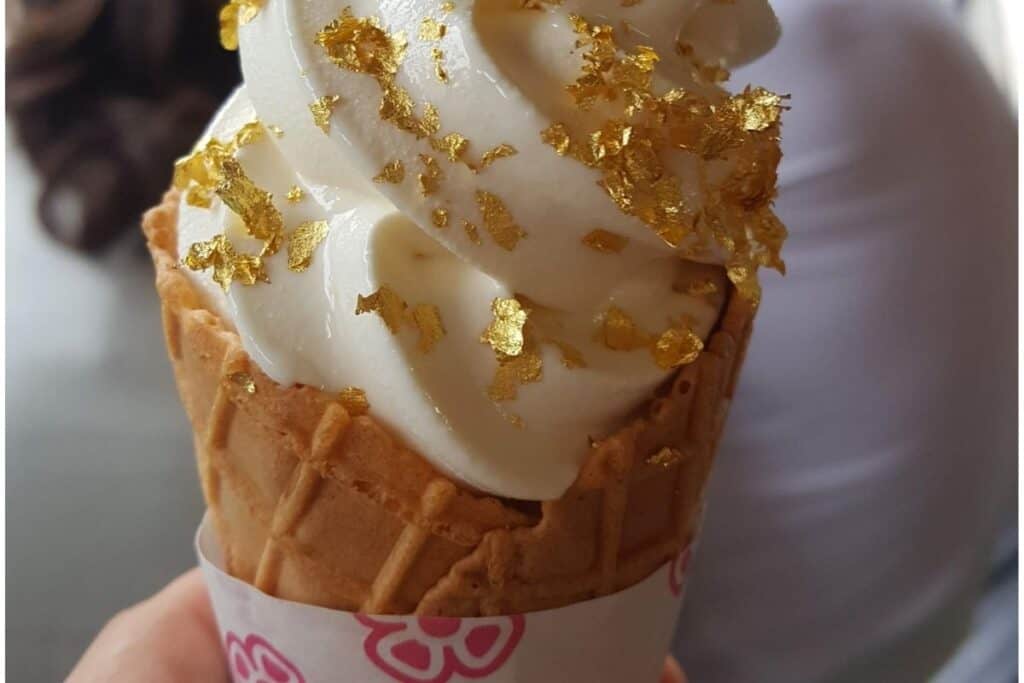
Meanwhile, Farm Tomita in Hokkaido receives more than one million tourists in the summer and holds the largest lavender farm in Japan. Unsurprisingly, their ice cream comes in a light purple lavender flavor, perfect for a warm summer day.
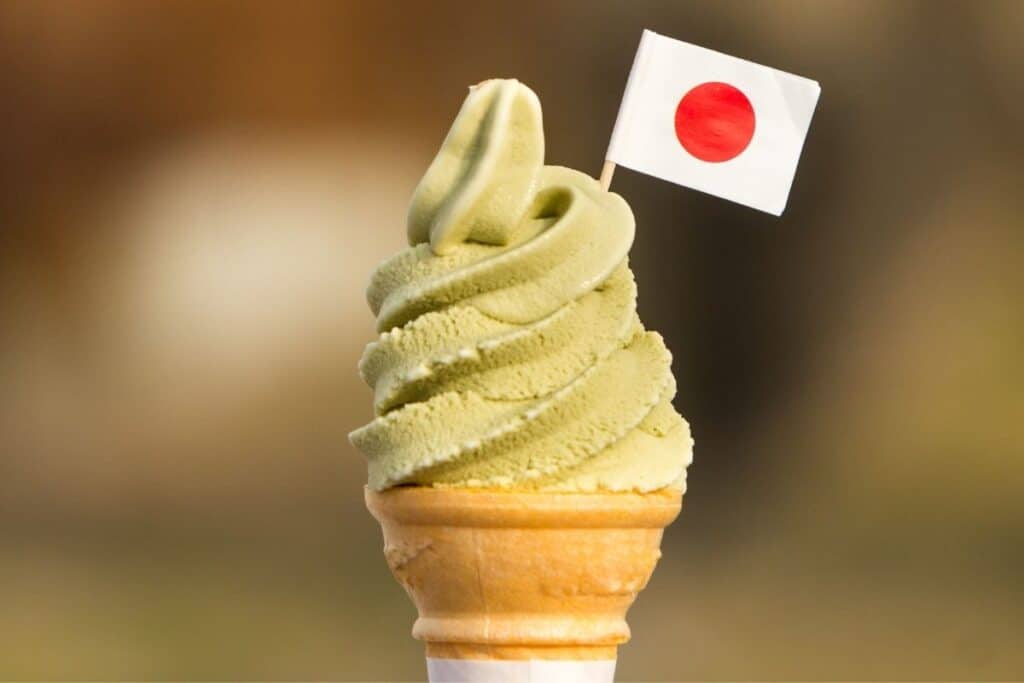
From purple sweet potato to miso, wasabi, garlic, snake, cactus, and even squid ink, there are so many unique flavors of ice cream in Japan you won’t know where to begin.
Final Thoughts
Though traditional Japanese cuisine may not suit everyone’s palate, traveling to Japan is guaranteed to bring you a unique and exotic food experience.
And there’s something for everyone. If you’re new to exotic flavors, try something simple like lavender ice cream; if you’re a food connoisseur, opt for something more adventurous such as Fugu – just make sure you have an expert Japanese chef prepare it for you.

